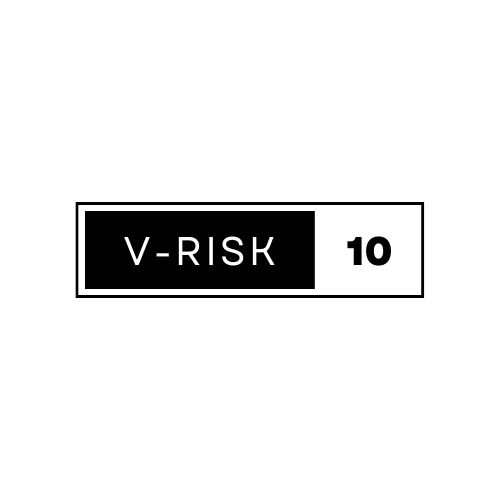V-RISK-10
V-RISK-10 er en kort screening sjekkliste med 10 ledd som dekker historiske, kliniske og risikohåndteringsvariabler.
Klinisk anvending: Screening sjekkliste i akutt- og allmennpsykiatri.
Risikovurdering

V-RISK-10 ble utarbeidet fra 2001 – 2005, og validert i tidsrommet 2005-2008 på vel 1.000 inneliggende pasienter i akuttpsykiatriske avdelinger i Oslo og Ålesund, og knapt 400 utskrevne derfra med oppfølgingstid ett år. Også validert i 2013 på Akuttpsykiatrisk avdeling, Ous (Ullevål). Sjekklisten har vist god inter-rater reliabilitet, og gode prediksjonsegenskaper (ROC-AUC verdier rundt 0.80).
Sjekklisten er et screeninginstrument, som bør følges opp med nærmere individuell risikovurdering der dette finnes riktig. Beregnet til å brukes uten spesiell forhåndopplæring, slik at både for eksempel turnuskandidater og leger i spesialistutdanning kan bruke det i daglig drift. De enkelte leddene skåres Nei (ikke til stede), Kanskje eller Moderat (til stede), Ja (til stede), eller Vet ikke. Det understrekes at Vet ikke også er en risikofaktor sammenliknet med Nei, og dette bør telle med i risikovurderingen.
V-RISK-10 er tatt i bruk i en rekke andre land, som Sverige, Finland, UK, USA, Russland, Kina. Oversatt til engelsk, svensk, russisk og kinesisk, og det arbeides med en tysk oversettelse. Publikasjonsreferanser til sjekklisten finnes ved søk på V-RISK-10, og sjekklisten kan lastes ned for gratis bruk nederst på denne siden. Det er ikke tillat å bruke sjekklisten i kommersiell sammenheng eller ta betalt fra de som bruker den. Lay-out kan tilpasses den enkeltes behov (for eksempel journaloppsett), men teksten kan ikke endres.
Kontaktperson for V-RISK-10: John Olav Roaldset (johnolr@gmail.com)
Information about V-RISK-10 in English
The V-RISK-10 is a brief screening checklist with 10 items covering historical, clinical and risk management variables. It has shown a high inter rater reliability, and further a high predictive validity, i.e. with values around 0.80 in Receiver Operating Characteristics (ROC) analysis.
The screen was constructed in 2001 – 2005. It was validated in the period 2005-2008 for hospitalized patients (N= 1.000) and discharged/ambulatory patients (N= 400), and further evaluated in 2013. It is meant for use without special training for specialists and trainees in psychiatry and clinical psychology, and further for team based assessment with other health professionals.
V-RISK-10 is widely used in Norway, also in parts of Sweden, Finland, UK, USA, Russia, China and Ukraine. It has been translated into English, Swedish, Russian, Chinese, and currently into German. The screen can be downloaded from this page, and it can be used for free; without any charges. However, commercial use or charging anyone who are using it is not allowed. The lay-out of the screen can be adapted to your records, but the text cannot be changed.
Main publication references is found by search on V-RISK-10.
Main instructions for use
The most important basis for violence risk assessment has always been a combination of clinical knowledge and sound sense. Earlier research has however shown that the use of checklists can improve the assessments. In the start the checklists were elaborated and used in forensic psychiatric practice. Regarding acute and general psychiatry, these tools were too time consuming for the high and rapidly circulating numbers of patients in this field of the services, something that led to the development of brief checklists. The main impact of these is to help the clinicians in their final clinical assessment. Even experienced clinicians may overlook items that may be of central importance for the real risk of violent acting out. Less experienced colleagues may need the help of tools that always should be at hand in the daily work with many patients. It is however important to remember that risk assessment checklists never can be compared to laboratory tests in somatic medicine. Their main aim is to help the clinical assessment, for the brief checklists (screens) also to be an introduction to the more time consuming tools for a selection of patients.
The construction of V-RISK-10 was influenced by the HCR-20, and hence is a tool in the Structured Professional Judgement (SPJ) tradition. Each item is scored No (not present), May be or Moderate (present), Yes (present) or Don’t know. It should be underlined that the item score of Don’t’ know indicate increased risk compared with the No score.
Regarding manual for scoring of the items, each has its scoring instructions in the two-paged screen. It contains also concluding paragraphs, so an independent scoring manual is not necessary; all necessary information is on the sheet.
Contact person for V-RISK-10: John Olav Roaldset (johnolr@gmail.com)
Til nedlasting / for downloading:
Kommende kurs
03
28
25
Relevante tema
NERS Mini-webinar
En webinar-rekke med relevante tema for sakkyndige og andre som er interessert i å utvide sin kompetanse innen sikkerhets-, fengsels og rettspsykiatri. Webinarene vil ha en varighet på to timer og er gratis.

